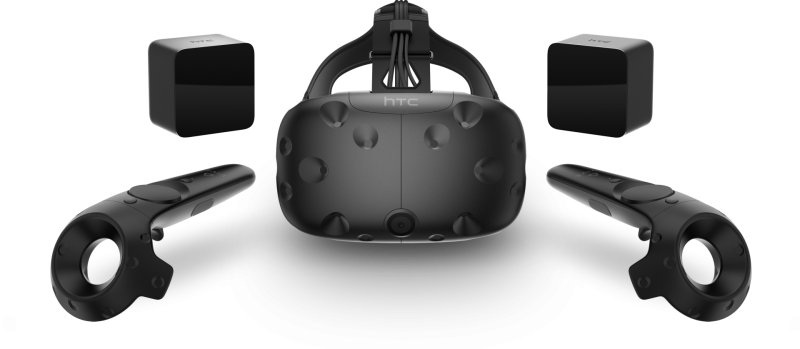The HTC Vive is a virtual reality system designed to work with Steam VR. The system seeks to go beyond just a headset in order to make an entire room a virtual reality environment by using two base stations that track the headset and controller in space. The hardware is very exciting because of the potential to expand gaming and other VR experiences, but it’s already showing significant potential for hackers as well — in this case with robotics location and navigation.
Autonomous robots generally utilize one of two basic approaches for locating themselves: onboard sensors and mapping to see the world around it (like how you’d get your bearings while hiking), or sensors in the room which tell the robot where it is (similar to your GPS telling you where you are in the city). Each method has its strengths and weaknesses, of course. Onboard sensors are traditionally expensive if you need very accurate position data, and GPS location data is far too inaccurate to be of use on a smaller scale than city streets.
[Limor] immediately saw the potential in the HTC Vive to solve this problem, at least for indoor applications. Using the Vive Lighthouse base stations, he’s able to locate the system’s controller in 3D space to within 0.3mm. He’s then able to use this data on a Linux system and integrate it into ROS (Robot Operating System). [Limor] hasn’t yet built a robot to utilize this approach, but the significant cost savings ($800 for a complete Vive, but only the Lighthouses and controller are needed) is sure to make this a desirable option for a lot of robot builders. And, as we’ve seen, integrating the Vive hardware with DIY electronics should be entirely possible.

















The volume is somewhat limited, as it is recommended not to exceed 5m between base stations, i’m not sure if the sync cable could solve this.
The volume is per pair of base stations. If you can eliminate crosstalk between pairs, you can actually use several base stations to cover larger areas.
The technology used is royalty free and the datasheet of the sensor ic is available online.
https://www.triadsemi.com/product/ts3633/
https://partner.steamgames.com/vrtracking/
So it is possible to integrate everything and remove controller.
Thank you for these links. You must be a god of google.
As for cutting out unnecessary parts, you can literally just buy the lighthouses as accessories for $185 USD each. They’re really the only part of the lighthouse system you need. Also, if your range permits it, you can use only one.
The lighthouses are entirely passive, radiating their sweeping tracking signal, so the rest could easily be a DIY solution with homemade photosensors and electronics to do the tracking math.
Autonomous…
http://ermiliablog.files.wordpress.com/2013/05/inigo-montoya-what-you-think-it-means-meme.jpg
He should’ve contacted Valve instead of misused his fancy VR kit for this, Valve has said they are very willing to sell the sensors (so whats on the controllers & headset) separately.
Looks like they(Valve) are offering the dev kit to just companies while Triad Semiconductors sells just the sensors.
Also from the article i read,
“The kit is free for developers, but in order to participate in the program, each company must send at least one person to a $3,000 training course held in Seattle. The first of these multi-day programs will be held in mid-September, and Valve says that at some point in the future, it hopes to eliminate the in-person training requirement. Companies don’t need their products approved by Valve in order to sell them, although they will need to comply with the terms of the license.”
s.http://www.theverge.com/circuitbreaker/2016/8/4/12374508/valve-htc-vive-steamvr-tracking-license-custom-hardware-program
Though 0.3mm resolution in a 5m^3 volume would be quite acceptable for 3D printing furniture, car bodywork, boat hull etc. Used as the feedback for a somewhat low tech xyz gantry or arm. I’m thinking electrical conduit and bike chains at the moment…. hmmm knockdown setup fits in a portable garage… probably about 2.5m x 2m x 4m print volume for proof of concept. Industrial hot glue gun extruder maybe.
That’s awesome, it’s like a low cost Vicon system
I’ve been playing with this stuff myself. And on that note, you can buy “replacement parts” from HTC, instead of needing the whole kit. Still not cheap by any means, but more affordable.
It was always only a matter of time until someone did this. Hopefully it will eventually be possible to setup lighthouse nodes throughout a house for robotics positioning. Though I’d like to put a collar on my cat and track her position.